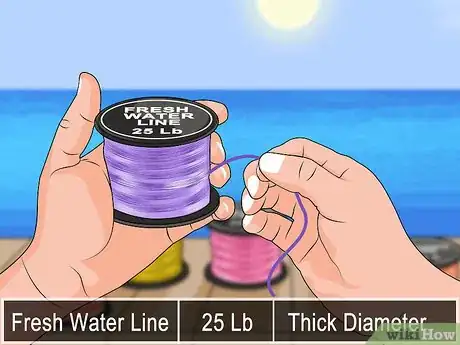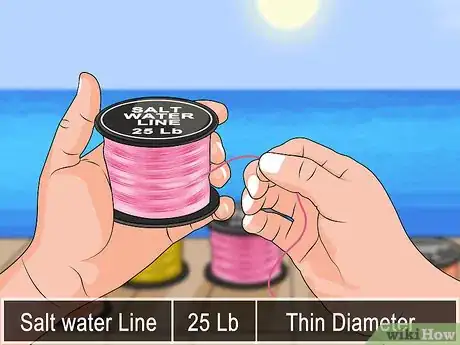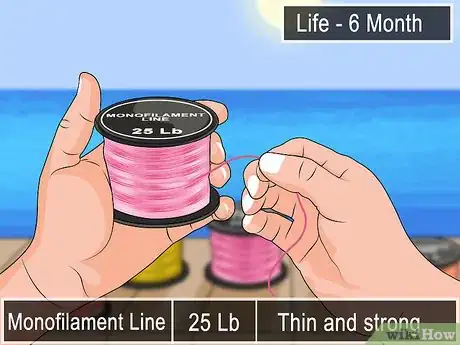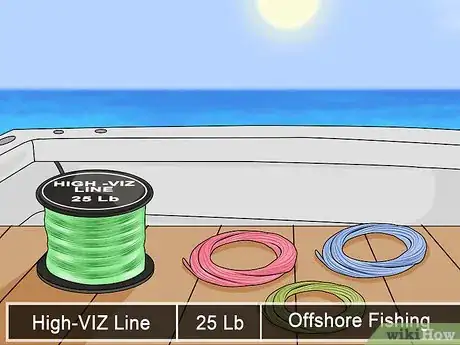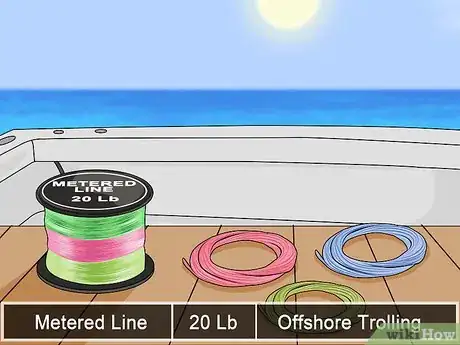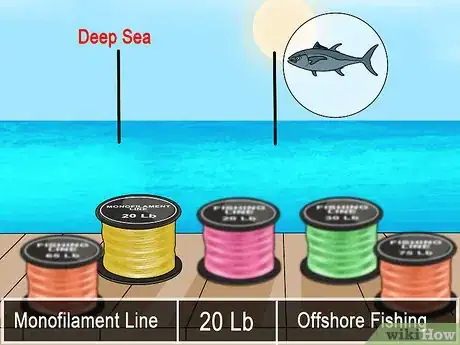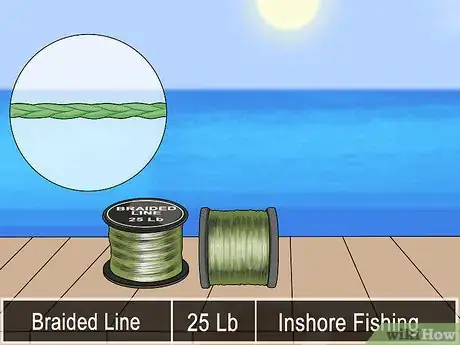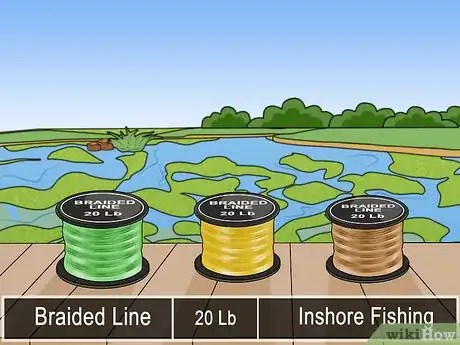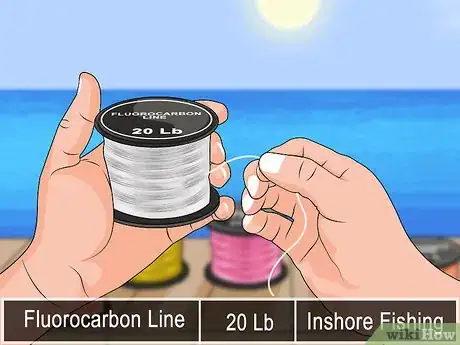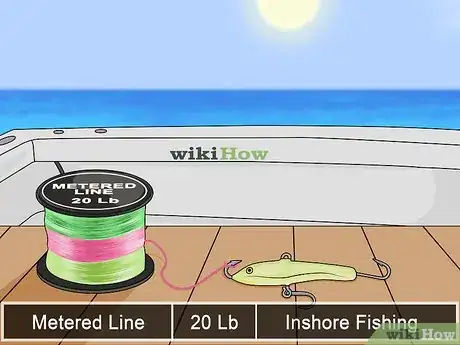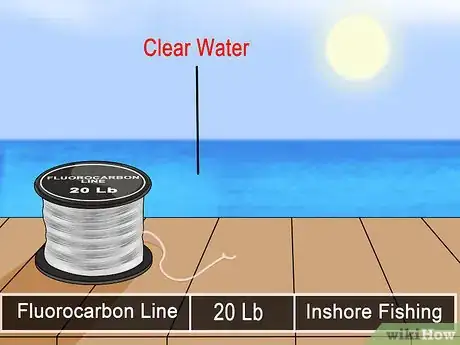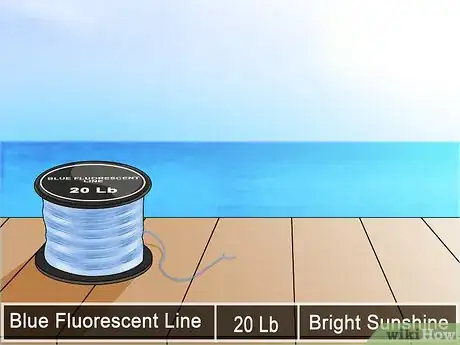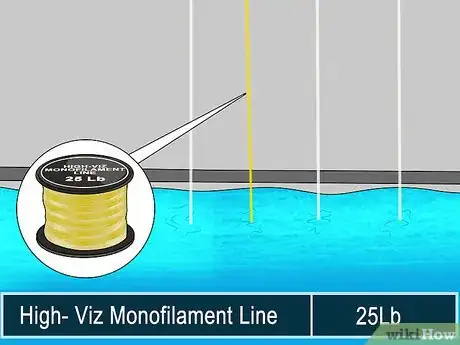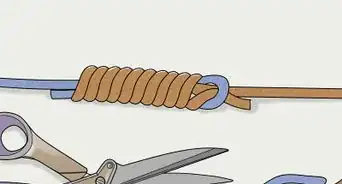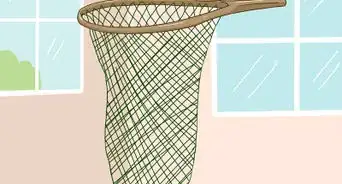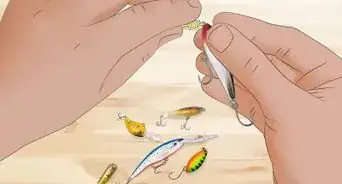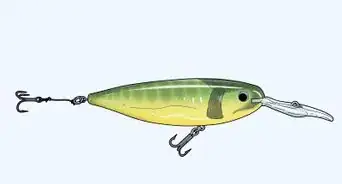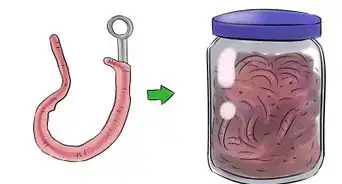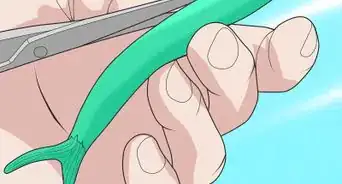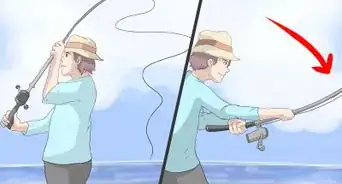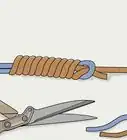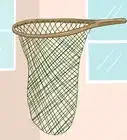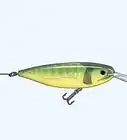This article was co-authored by Kathy Sparrow, MA. Kathy Sparrow is a fly-fishing instructor and adventurer at heart. Kathy is the co-founder and previous manager of the Kingfisher Inn, a fly-fishing lodge on the Lower Laguna Madre in Texas. She is the author of "On the Mother Lagoon: Flyfishing and the Spiritual Journey" and "The Whispered Teachings of Grandmother Trout” a novel conveying the feminine perspective of fly fishing. Kathy is also a Certified Canfield Trainer in Canfield Methodologies. She guides individuals through the process of embracing change by expressing confidence, awareness, and courage through the tools of writing, fly fishing, and intentional conversation. She has a MA in English with an emphasis in Literature and Cultural Studies from the University of Texas-Pan American.
There are 11 references cited in this article, which can be found at the bottom of the page.
This article has been viewed 23,797 times.
Fishing line is probably the most important component in a fisherman’s arsenal, not just because it is what you will bring the fish in on, but because it is on the line that you present lures and bait. Line makes a huge difference in the quality of your presentation and catching success. There are a wide-range of line types available which are designed to work particularly well in particular conditions. Get to know which line is best for which type of fishing and which fishing environment to give yourself the best possible chances of success out on the water.
Steps
Understanding the Basics
-
1Get the appropriate strength line. Before you choose a line, be clear about what kind of fishing you are taking on. Fishing lines have a pound-test strength, which can go from one pound all the way up to 75. Choosing which lbs test line you are going to use depends on what fish you are looking for. But as a rule of thumb, the smaller the line the narrower it’s diameter, so the less likely it is to put off the fish.[1]
- The lbs test refers to amount of force the line should be able to withstand at its weakest point.
- It does not meant that you cannot catch a fish bigger than 12lbs on a 12lbs test line.
- You can use the drag on your reel to help you to do this.[2]
-
2Get the right line for freshwater fishing. As well as getting the right strength line, you should also choose a line that best matches the water you will be fishing in. Because freshwater is less dense than saltwater, freshwater lines will be generally have larger diameters and lower line densities than saltwater lines, in order to improve flotation.[3]Advertisement
-
3Get the right line for saltwater fishing. Saltwater fishing line will generally be designed for quick accurate casts that can travel long distances. If you take a freshwater line saltwater fishing, it won’t help you to get the results you are hoping for. With the denser saltwater you can use a line with a smaller diameter without compromising on floatation.[4]
-
4Use monofilament line as your basic standard line. There are a number of different types of line which are constructed in different ways with different strengths and weakness. Monofilament line is the most popular line for most uses, as it is thin and strong. You can get monofilament line that is of a very narrow diameter which will be less intrusive in the water, but doesn’t lose its pound-test strength.[5]
Fishing Offshore
-
1Use high-viz line for offshore fishing with multiple lines. Different colours and visibilities of line work well in different situations. High-viz lines are most often used for offshore fishing as they make it easier to keep track of your lines. If you need an instant read on the position of your lines, such as when offshore trolling or kite fishing, then high-viz line is often the best choice.
- Different people will have had different experience with different colours, so always ask around and see what seems to be working well in particular areas.
-
2Consider a ‘metered’ or ‘indicator’ line for offshore trolling. Another alternative to a high-viz line is what is known as a ‘metered’, or ‘indicator’ line. These lines have sections of coloured line of varied number, but of short and equal lengths. The colour changes make it easy to set lures at particular measurements when you are offshore trolling.
-
3Use a strong monofilament line for deep sea fishing. If you are graduating to serious offshore fishing for huge tuna or marlin, then you want a line with a good pound-test strength. This kind of fishing takes you a long way from shore, so you need a reliable line that can handle the pressure of big fish. A monofilament line with a 20 lbs-test strength should do the job.[8]
- A gold high-viz line will help you keep track of the line.
Fishing Inshore
-
1Use a braided line for strength and abrasion resistance. In contrast to monofilament line, braided lines generally have a wider diameter, and are best suited for taking on larger fish in murkier waters where visibility is less important. Braided line is made up from woven fibres that give it incredible strength, as well as durability, and high abrasion resistance. Fishing in thick cover or muddy water will diminish the visibility of the braided line.[9]
- They also have no stretch, so you can feel more at the end of your line than you might with a monofilament line.
-
2Choose a low-viz line. Traditionally, low visibility lines of green, bronze and brown are used for inshore fishing. Moss green is great for fishing in an area with heavy weeds in the water.[10] The muddy substrate and off-colour water help to obscure the line so it disappears in water and the fish don’t notice it so easily.
-
3For a line with good abrasion resistance but lower visibility choose a fluorocarbon line. Braided lines have excellent abrasion resistance to get over rocks and snags without breaking, but fluorocarbon line is also a good choice for this. It is much less visible than a braided line, and like braided line does not stretch, so you still have better feel than with a monofilament line.[11]
-
4Use a braided line to cut through weeds. Often fish like Bass will retreat into the weeds and be hard to reach for your cast, as the line can get caught up the greenery, stalks and weeds above and below the water’s surface. Using a braided line is the best way to fish in these conditions, as braided line cut really cut through those weeds with a minimum of fuss.[12]
-
5Use a ‘metered’ or ‘indicator’ line for jigging. Line with coloured sections are great for jigging in shore, as they give you a good reference point for depth. You can carry out precision vertical jigging by using the changing colours to wind up a particular depth after casting.
Fishing in Clear Water and Good Weather
-
1Use a fluorocarbon line. If you are going fishing in light cover, clear water, or rocky terrain, often a fluorocarbon line is the best choice. It is much less visible than braided line, and has excellent abrasion resistance to get around rocks and logs.[13] Fluorocarbon line is, in fact, almost invisible under water as it has a light refractive index that closely matches that of water, so the light passes through the line without reflecting back.[14]
- Fluorocarbon line will not weaken in the same way that monofilament line does.
- It is also stretches less, so you will have greater sensitivity on your line.[15]
-
2Use a clear line. A clear blue fluorescent line is absolutely perfect for fishing in the sunshine.[16] Under the water it will remain clear so the fish can’t see it, but the light from above the water will reflect off of it so that you will be able to see it from above the water. You being able to see the line and keep track of it when the fish can’t is a good start.[17]
-
3Use a gold high-viz monofilament line when you need to see multiple lines. If you are out fishing and you have numerous lines out, it can be hard to keep track of them all, especially if the sun is reflective off the water strongly. Gold monofilament line is a good choice for these conditions, but it will be more visible to the fish than a fluorocarbon or clue blue fluorescent line.
Expert Q&A
-
QuestionHow do I know what fishing line to use?
 Kathy Sparrow, MAKathy Sparrow is a fly-fishing instructor and adventurer at heart. Kathy is the co-founder and previous manager of the Kingfisher Inn, a fly-fishing lodge on the Lower Laguna Madre in Texas. She is the author of "On the Mother Lagoon: Flyfishing and the Spiritual Journey" and "The Whispered Teachings of Grandmother Trout” a novel conveying the feminine perspective of fly fishing. Kathy is also a Certified Canfield Trainer in Canfield Methodologies. She guides individuals through the process of embracing change by expressing confidence, awareness, and courage through the tools of writing, fly fishing, and intentional conversation. She has a MA in English with an emphasis in Literature and Cultural Studies from the University of Texas-Pan American.
Kathy Sparrow, MAKathy Sparrow is a fly-fishing instructor and adventurer at heart. Kathy is the co-founder and previous manager of the Kingfisher Inn, a fly-fishing lodge on the Lower Laguna Madre in Texas. She is the author of "On the Mother Lagoon: Flyfishing and the Spiritual Journey" and "The Whispered Teachings of Grandmother Trout” a novel conveying the feminine perspective of fly fishing. Kathy is also a Certified Canfield Trainer in Canfield Methodologies. She guides individuals through the process of embracing change by expressing confidence, awareness, and courage through the tools of writing, fly fishing, and intentional conversation. She has a MA in English with an emphasis in Literature and Cultural Studies from the University of Texas-Pan American.
Fishing Instructor If you're not sure what type of fishing line you need, visit a fly shop in the area and ask what they recommend because it really depends on the region where you're fishing. For instance, you'll use a different line for saltwater than for freshwater and for warmer water than for cold.
If you're not sure what type of fishing line you need, visit a fly shop in the area and ask what they recommend because it really depends on the region where you're fishing. For instance, you'll use a different line for saltwater than for freshwater and for warmer water than for cold.
References
- ↑ http://unionsportsmen.org/choosing-the-right-fishing-line/
- ↑ http://www.fishingtalks.com/what-does-lbs-test-mean-for-fishing-line-1543.html
- ↑ http://www.scientificanglers.com/plan-your-trip/fly-fishing-tips/freshwater-lines-vs-saltwater-lines
- ↑ http://www.scientificanglers.com/plan-your-trip/fly-fishing-tips/freshwater-lines-vs-saltwater-lines
- ↑ http://takemefishing.org/fishing/saltwater-fishing/saltwater-fishing-tackle/saltwater-fishing-line/
- ↑ http://1source.basspro.com/index.php/component/k2/238-fishing-tackle/603-can-t-decide-which-fishing-line-is-best-read-this
- ↑ http://takemefishing.org/fishing/saltwater-fishing/saltwater-fishing-tackle/saltwater-fishing-line/
- ↑ http://takemefishing.org/fishing/saltwater-fishing/where-to-fish/deep-sea-fishing/
- ↑ http://www.allfishingbuy.com/Fishing-Line.htm#site13
- ↑ http://www.allfishingbuy.com/Fishing-Line.htm#site13
- ↑ http://www.allfishingbuy.com/Fishing-Line.htm#site13
- ↑ http://www.furfishgame.com/featured_articles/Archived/2009-10/fish_and_tackle_10-09.php
- ↑ http://www.allfishingbuy.com/Fishing-Line.htm#site13
- ↑ http://1source.basspro.com/index.php/component/k2/238-fishing-tackle/603-can-t-decide-which-fishing-line-is-best-read-this
- ↑ http://learninghowtofish.com/fishing-equiptment/fishing-line-leaders/
- ↑ http://www.allfishingbuy.com/Fishing-Line.htm#site13
- ↑ http://www.allfishingbuy.com/Fishing-Line.htm#site13

